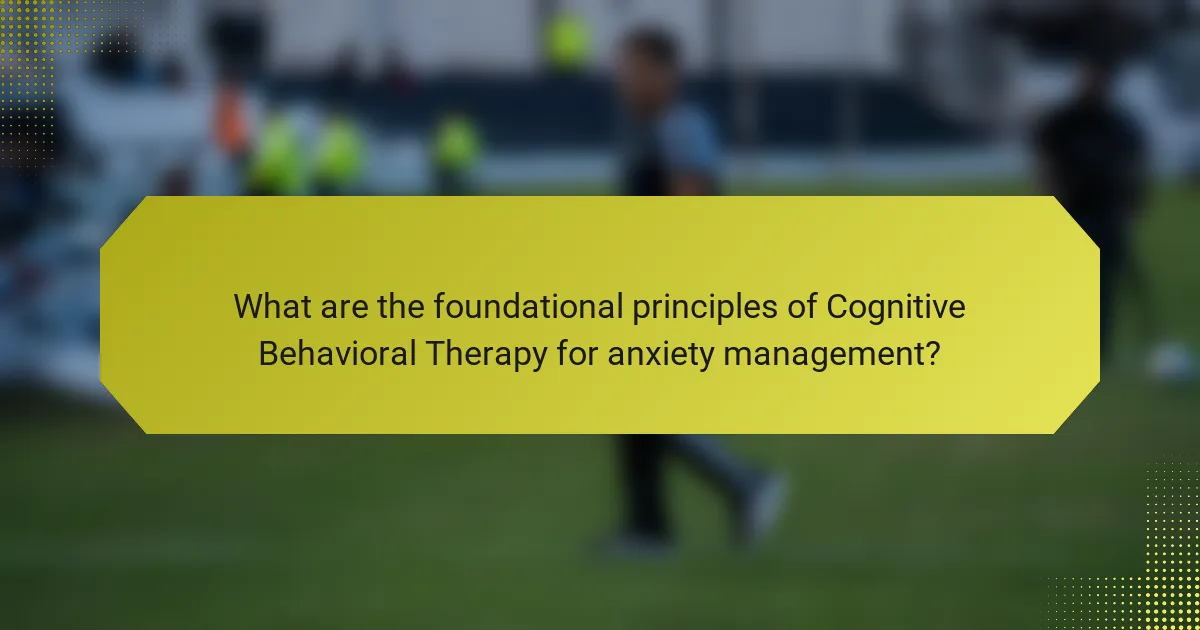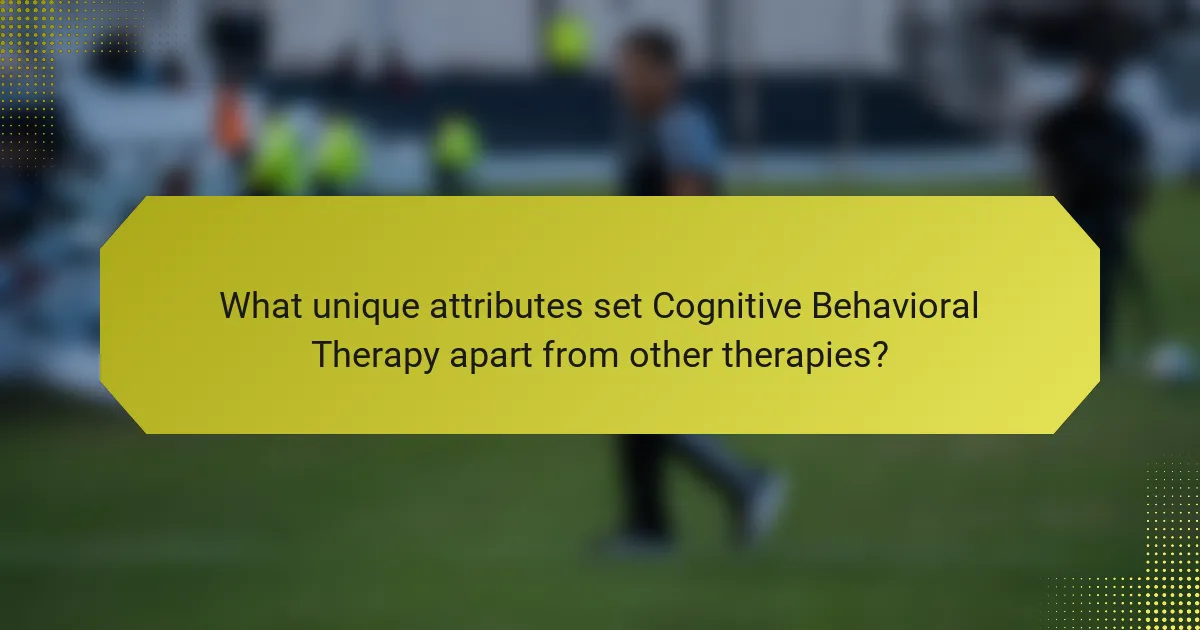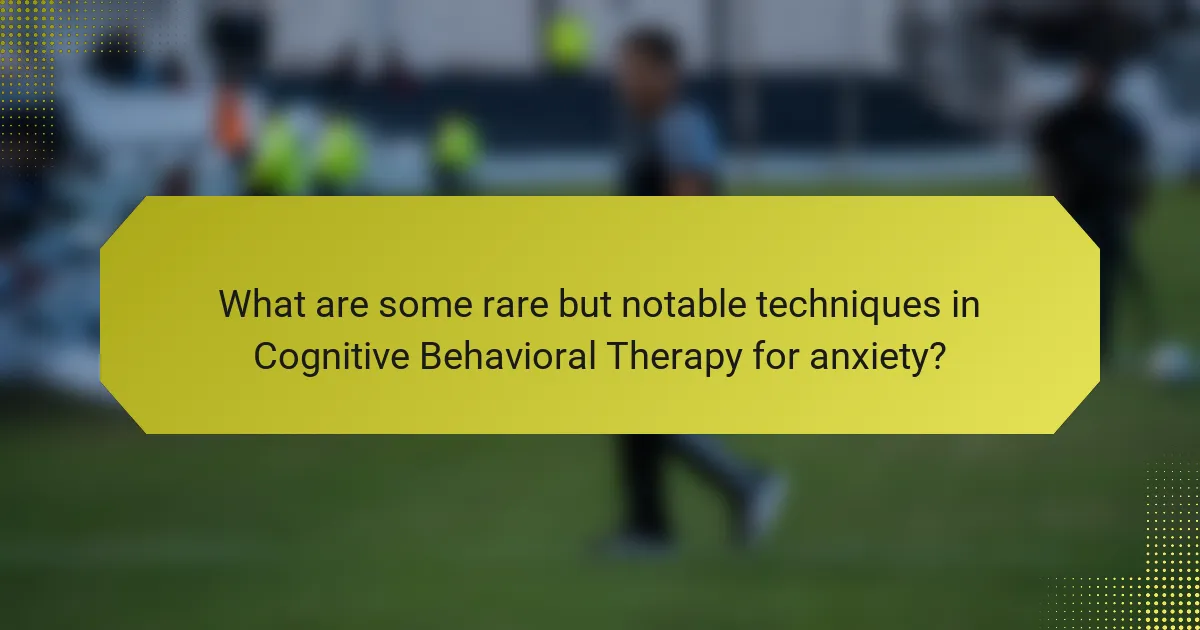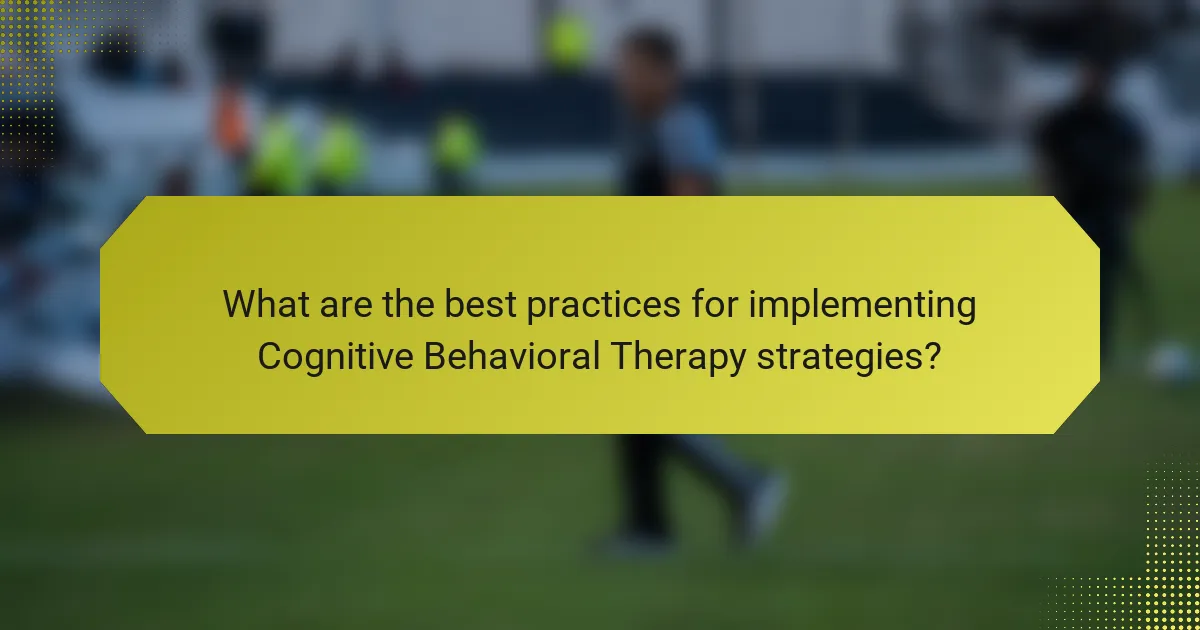Managing anxiety can be challenging, but Cognitive Behavioral Therapy (CBT) offers effective strategies to address it. Key techniques include cognitive restructuring, exposure therapy, and behavioral activation. Cultural factors influence the application of CBT, necessitating tailored approaches. Implementing structured strategies can lead to significant improvements in anxiety symptoms.

What are the foundational principles of Cognitive Behavioral Therapy for anxiety management?
Cognitive Behavioral Therapy (CBT) for anxiety management focuses on changing negative thought patterns and behaviors. Key principles include cognitive restructuring, exposure therapy, and behavioral activation. Cognitive restructuring helps identify and challenge irrational beliefs. Exposure therapy gradually confronts fears in a controlled way. Behavioral activation encourages engagement in enjoyable activities to counteract avoidance. Each principle aims to reduce anxiety symptoms effectively.
How does Cognitive Behavioral Therapy address anxiety symptoms?
Cognitive Behavioral Therapy effectively reduces anxiety symptoms by identifying and altering negative thought patterns. It employs strategies like cognitive restructuring, exposure therapy, and mindfulness techniques. Cognitive restructuring helps individuals challenge irrational beliefs, while exposure therapy gradually confronts anxiety-provoking situations. Mindfulness techniques enhance emotional regulation, promoting a present-focused mindset. These strategies collectively empower individuals to manage anxiety more effectively, leading to improved mental health outcomes.
What are the core techniques used in Cognitive Behavioral Therapy?
Cognitive Behavioral Therapy (CBT) employs several core techniques for anxiety management. These techniques include cognitive restructuring, exposure therapy, mindfulness practices, and behavioral activation.
Cognitive restructuring helps identify and challenge negative thought patterns, promoting healthier thinking. Exposure therapy gradually exposes individuals to anxiety-provoking situations, reducing avoidance behaviors. Mindfulness practices enhance present-moment awareness, aiding in emotional regulation. Behavioral activation encourages engagement in enjoyable activities, countering feelings of helplessness.
These strategies collectively empower individuals to manage anxiety effectively, fostering resilience and improved mental health.
How is cognitive restructuring implemented in therapy?
Cognitive restructuring in therapy is implemented through identifying and challenging negative thought patterns. Therapists guide clients to recognize cognitive distortions and replace them with balanced thoughts. Techniques include thought records, guided discovery, and Socratic questioning. These strategies help reduce anxiety by altering maladaptive beliefs, promoting healthier thinking patterns.
What role does exposure therapy play in managing anxiety?
Exposure therapy is a key component of cognitive behavioral therapy for managing anxiety. It involves gradual exposure to anxiety-provoking stimuli, helping individuals confront and reduce their fear responses. This approach has been shown to decrease avoidance behaviors and improve coping mechanisms. Studies indicate that exposure therapy can lead to significant reductions in anxiety symptoms, with some patients experiencing lasting relief. Its unique attribute lies in its structured methodology, often tailored to individual needs, ensuring effectiveness in diverse anxiety disorders.
What are the universal benefits of Cognitive Behavioral Therapy for anxiety?
Cognitive Behavioral Therapy (CBT) effectively reduces anxiety symptoms through structured strategies. It promotes understanding of thought patterns, enhances coping skills, and encourages behavioral changes. Research indicates that CBT can lead to significant improvements in anxiety management, with studies showing a 60-70% success rate in reducing anxiety disorders. Key benefits include increased self-awareness, improved emotional regulation, and the development of practical tools for managing anxiety triggers. These strategies empower individuals to confront fears and reduce avoidance behaviors, fostering long-term resilience.

What unique attributes set Cognitive Behavioral Therapy apart from other therapies?
Cognitive Behavioral Therapy (CBT) is distinct due to its structured approach, focus on present thoughts, and emphasis on skill-building. Unlike other therapies, CBT utilizes specific techniques like cognitive restructuring and exposure therapy, which directly address anxiety triggers. This unique attribute allows clients to actively engage in their treatment, fostering a sense of control. Additionally, CBT is time-limited, typically lasting 12 to 20 sessions, which differentiates it from more open-ended therapeutic approaches. Its evidence-based nature further sets it apart, with numerous studies supporting its effectiveness in anxiety management.
How does the therapist-client relationship influence outcomes?
The therapist-client relationship significantly influences outcomes in cognitive behavioral therapy for anxiety management. A strong alliance fosters trust, enhancing communication and openness. This connection allows clients to engage more deeply with therapeutic strategies, leading to better adherence and effectiveness. Studies show that positive relationships correlate with improved symptom reduction and overall satisfaction with therapy. Factors such as empathy, support, and mutual respect are essential in creating this influential bond.
What specific techniques are unique to Cognitive Behavioral Therapy?
Cognitive Behavioral Therapy employs several unique techniques for anxiety management, including cognitive restructuring, exposure therapy, and mindfulness practices. Cognitive restructuring helps identify and challenge negative thought patterns. Exposure therapy gradually confronts feared situations to reduce anxiety. Mindfulness practices enhance awareness and acceptance of thoughts and feelings, promoting emotional regulation. These strategies work together to empower individuals in managing anxiety effectively.
How does the use of thought records enhance understanding?
Thought records enhance understanding by promoting self-reflection and cognitive clarity. They help individuals identify distorted thoughts, recognize patterns, and evaluate the validity of their beliefs. This process fosters emotional regulation and reduces anxiety symptoms. By systematically documenting thoughts and feelings, users gain insights into their cognitive processes, leading to improved coping strategies.
What distinguishes behavioral experiments in therapy?
Behavioral experiments in therapy are distinguished by their focus on real-life situations to test beliefs and behaviors. They allow clients to actively engage in situations that provoke anxiety, providing immediate feedback on their thought patterns. This experiential learning contrasts with traditional cognitive approaches that may rely more on discussion and reflection. Unique attributes include the emphasis on practical application and the ability to modify behaviors in real-time, enhancing the therapeutic process.

What are some rare but notable techniques in Cognitive Behavioral Therapy for anxiety?
Some rare but notable techniques in Cognitive Behavioral Therapy for anxiety include exposure therapy with virtual reality, mindfulness-based cognitive therapy, cognitive restructuring with a focus on self-compassion, and acceptance and commitment therapy. These strategies leverage unique attributes to enhance traditional methods, providing innovative approaches to anxiety management.
How can advanced techniques like schema therapy be applied?
Advanced techniques like schema therapy can enhance cognitive behavioral therapy strategies for anxiety management by addressing underlying cognitive patterns. Schema therapy identifies negative beliefs and emotional responses rooted in early experiences. By integrating this approach, therapists can help clients reframe maladaptive schemas, leading to improved emotional regulation and reduced anxiety symptoms. This method allows for deeper exploration of personal narratives, promoting lasting behavioral change.
What role do technology-based interventions play in modern therapy?
Technology-based interventions enhance cognitive behavioral therapy (CBT) for anxiety management by providing accessible and personalized support. Digital platforms enable real-time tracking of symptoms, facilitating timely interventions. Virtual reality tools immerse users in controlled environments, allowing for exposure therapy. Apps offer guided exercises and cognitive restructuring techniques, promoting self-efficacy. Research indicates these interventions can significantly reduce anxiety levels, making therapy more effective and engaging.

How can cultural factors influence the application of Cognitive Behavioral Therapy?
Cultural factors significantly influence the application of Cognitive Behavioral Therapy (CBT) by shaping the perceptions of mental health and coping strategies. Cultural beliefs can affect how individuals express anxiety, engage in therapy, and respond to CBT techniques. For example, collectivist cultures may prioritize group harmony, impacting the focus of therapy on individual versus relational issues. Additionally, cultural stigma surrounding mental health can lead to reluctance in seeking help. Understanding these cultural nuances allows therapists to tailor CBT strategies, enhancing their effectiveness and client engagement.
What adaptations are necessary for diverse populations?
Cognitive Behavioral Therapy (CBT) strategies must adapt to address the unique needs of diverse populations. These adaptations include cultural sensitivity, language accessibility, and consideration of varying social contexts.
Cultural sensitivity ensures that therapeutic approaches respect and integrate clients’ cultural backgrounds, beliefs, and values. Language accessibility involves providing resources and therapy in multiple languages to ensure comprehension. Additionally, recognizing the impact of socio-economic factors can guide the customization of strategies to fit different life experiences.
For effective implementation, therapists should engage in ongoing training about diverse populations and seek feedback to refine their approaches. This commitment enhances the therapeutic alliance and improves outcomes for clients from various backgrounds.

What are the best practices for implementing Cognitive Behavioral Therapy strategies?
To effectively implement Cognitive Behavioral Therapy strategies for anxiety management, focus on structured approaches. Start with identifying negative thought patterns, then challenge and reframe these thoughts. Incorporate relaxation techniques such as deep breathing or mindfulness to reduce anxiety symptoms. Establish clear goals to track progress and maintain motivation. Regular practice of these strategies can lead to significant improvements in anxiety management.
What common mistakes should therapists avoid when using Cognitive Behavioral Therapy?
Therapists should avoid several common mistakes when using Cognitive Behavioral Therapy (CBT) for anxiety management. Failing to establish a strong therapeutic alliance can hinder progress. Overlooking individual differences in clients may lead to ineffective strategies. Additionally, neglecting to set realistic goals can create frustration. Lastly, not incorporating regular feedback can prevent necessary adjustments in treatment.
How can clients maximize the effectiveness of their therapy sessions?
Clients can maximize therapy effectiveness by actively participating and implementing strategies. Preparation before sessions enhances focus and clarity.
1. Set specific goals to guide discussions.
2. Practice techniques learned in sessions regularly.
3. Maintain open communication with the therapist.
4. Reflect on progress and challenges between sessions.
5. Stay consistent with attendance to build momentum.
These strategies foster a collaborative environment, enhancing cognitive behavioral therapy outcomes for anxiety management.
What are the key takeaways for individuals seeking Cognitive Behavioral Therapy for anxiety management?
Cognitive Behavioral Therapy (CBT) is effective for managing anxiety. Key takeaways include understanding thought patterns, practicing exposure techniques, and developing coping strategies. Individuals should engage in regular sessions, set specific goals, and apply learned skills consistently. Tracking progress enhances accountability and motivation. Seeking a qualified therapist is crucial for tailored support.


